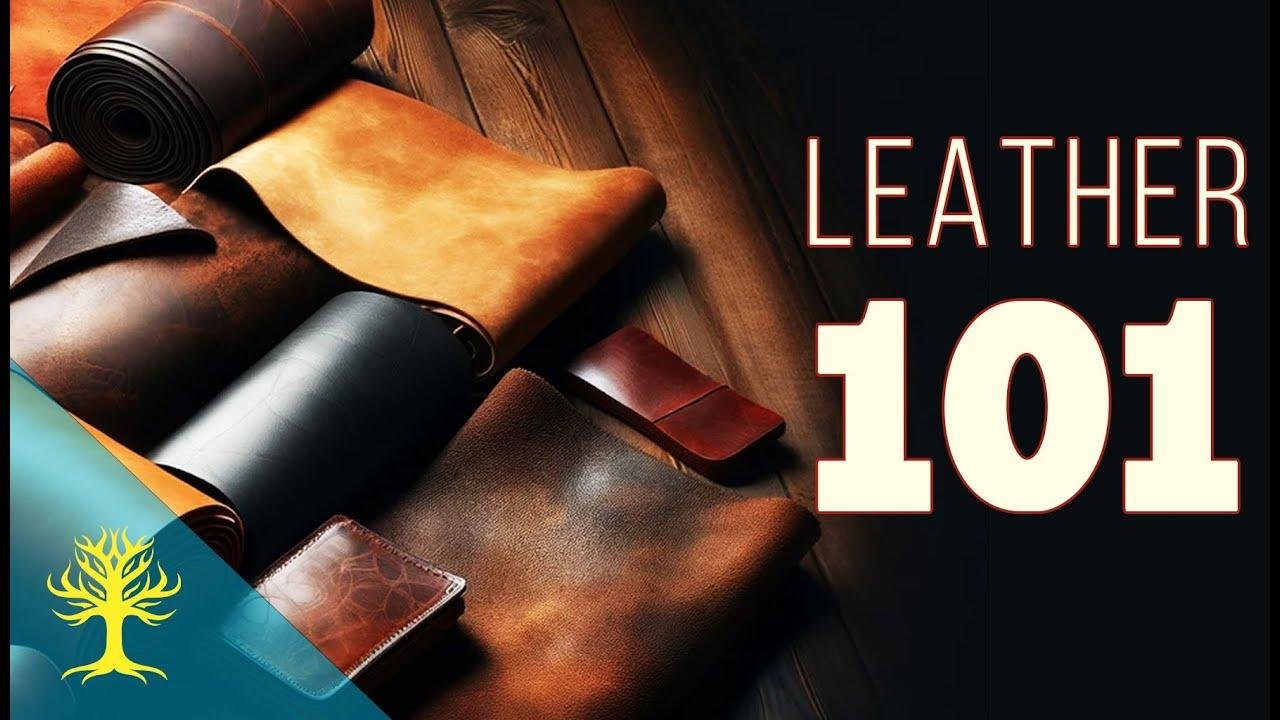- Verschiedene Ledertypen sind wie verschiedene Persönlichkeiten: vegetabiles Leder ist hart und steif wie ein Bodybuilder, während chromfarbenes Leder weich und geschmeidig ist wie eine kuschelige Decke.
- Ölgegerbtes Leder ist robust und hat viel Charakter, perfekt für den Einsatz im Freien.
- Lederzuschnitte haben auch ihre eigenen Merkmale, wie z. B. der Bauch, der zwar flexibel ist, sich aber nicht zur Herstellung von Rüstungen eignet.
- Lederoberflächen können Ihrem Projekt ein besonderes Flair verleihen, und vergessen Sie nicht die Art des Leders, das Sie wählen, von traditionellem Rindsleder bis hin zu exotischen Varianten wie Schlange oder Krokodil.
- Die Dicke des Leders, gemessen in Unzen, bestimmt seine Haltbarkeit und Flexibilität.
- Es gibt viele Bezugsquellen für Leder, von lokalen Geschäften bis hin zu Online-Händlern.
- Jede Art von Leder dient einem anderen Zweck. Wählen Sie also mit Bedacht und je nach Ihren Projektanforderungen und persönlichen Vorlieben. Viel Spaß beim Basteln!
Die Lederverarbeitung ist eine faszinierende Kunst, die auf eine reiche Geschichte zurückblicken kann und Anfängern eine Fülle von Möglichkeiten bietet. In diesem ultimativen Leitfaden werden wir die verschiedenen Lederarten, den Gerbungsprozess, die Oberflächenbehandlung und vieles mehr erkunden. Ganz gleich, ob Sie Kleidungsstücke, Accessoires oder Wohnaccessoires herstellen möchten, es ist wichtig, die verschiedenen verfügbaren Lederarten zu kennen.
Arten von Gerbverfahren
Inhaltsübersicht
Wenn es um Leder geht, ist das Gerbverfahren ein entscheidender Faktor, der seine Eigenschaften und Verwendungsmöglichkeiten bestimmt. Es gibt mehrere Arten von Gerbverfahren, darunter pflanzlich gegerbtes Leder, chromgegerbtes Leder, ölgegerbtes Leder und mehr. Jedes Verfahren verleiht dem Leder einzigartige Eigenschaften, weshalb es wichtig ist, die Unterschiede zu kennen, bevor man sich für den richtigen Typ für sein Projekt entscheidet.
Pflanzlich gegerbtes Leder
| Gerbverfahren | Merkmale |
|---|---|
| Pflanzliche Bräune | Robust und steif |
| Färbt gut | |
| Ideal für Rüstungen |
Chromgegerbtes Leder
| Gerbverfahren | Merkmale |
|---|---|
| Chrom hellbraun | Geschmeidig und stoffähnlich |
| Begrenzte Werkzeugkapazitäten | |
| Ideal für Kleidungsstücke und stoffähnliche Projekte |
Lederzuschnitte und -dicken verstehen .
.
Der Zuschnitt und die Dicke des Leders spielen bei der Herstellung eine wichtige Rolle und wirken sich auf die Festigkeit, die Flexibilität und das Design des Endprodukts aus. Verschiedene Schnitte und Stärken eignen sich für unterschiedliche Anwendungen, von kleinen Gegenständen bis hin zu schweren Rüstungen.
Leder Schnitte
- Bauchige Schnitte: Ideal für kleine Gegenstände und flexible Projekte
- Schulterpartien: Bietet ein Gleichgewicht zwischen Flexibilität und Robustheit
- Überreste: Perfekt zum Üben und Experimentieren mit verschiedenen Techniken
Lederstärken
- 6 Unzen Leder: Vielseitig und für verschiedene Projekte geeignet
- 9 Unzen Leder: Ideal für starre Gegenstände wie Rüstungen und Strukturteile
Verschiedene Lederoberflächen erkunden
Nach dem Gerbungsprozess wird das Leder veredelt, um sein Aussehen und seine Haltbarkeit zu verbessern. Von transparenten Farbstoffen bis hin zu geprägten Mustern verleihen verschiedene Zurichtungen dem Leder seine einzigartige Textur und ästhetischen Qualitäten.
Geprägtes Leder
Durch das Prägen von Leder werden dem Material komplizierte Designs und Muster hinzugefügt, so dass keine Werkzeuge benötigt werden und optisch ansprechende Texturen entstehen.
Wildleder und Nubuk
Wildleder und Nubuk bieten unterschiedliche Texturen, wobei Wildleder weicher und zarter ist, während Nubuk einen robusten und strukturierten Eindruck vermittelt.
Hair-on Leder
Leder, an dem die Haare noch befestigt sind, verleiht eine zusätzliche Dimension von Stil und Authentizität und ist daher eine beliebte Wahl für spezielle Projekte.
Die Auswahl des richtigen Leders für Ihr Projekt
Wenn Sie die verschiedenen Lederarten, Gerbverfahren, Schnitte, Stärken und Oberflächenbehandlungen kennen, können Sie eine fundierte Entscheidung über die für Ihr spezielles Projekt geeignete Lederart treffen. Ob Sie nun Rindsleder, Bisonleder oder Hirschleder in Betracht ziehen, jede Lederart hat ihre eigenen Eigenschaften und Anwendungsmöglichkeiten.
Beschaffung von Qualitätsleder
Qualitativ hochwertiges Leder ist für jedes handwerkliche Projekt unerlässlich. Ganz gleich, ob Sie ein lokales Ledergeschäft besuchen oder online einkaufen, es ist wichtig, dass Sie Ihre Anforderungen und Vorlieben mitteilen, um sicherzustellen, dass Sie die richtige Lederart für Ihre Bedürfnisse erhalten. Außerdem kann der Besuch von Ledermessen und Fachveranstaltungen Ihr Verständnis für Leder und seine möglichen Anwendungen verbessern.
Schlussfolgerung
Zusammenfassend lässt sich sagen, dass die Welt des Lederhandwerks eine Vielzahl von Möglichkeiten bietet, von Gerbverfahren bis hin zu Oberflächenbehandlungen, Schnitten und Dicken. Wenn Sie sich mit den Nuancen der verschiedenen Ledersorten vertraut machen, können Sie als Anfänger gut gerüstet und informiert in die Welt der Lederverarbeitung eintauchen. Denken Sie daran, die Kunst des Arbeitens mit Leder zu erforschen, zu experimentieren und zu genießen, und Sie werden endlose kreative Möglichkeiten finden, die darauf warten, verwirklicht zu werden.
Wichtigste Erkenntnisse:
- Gerbverfahren beeinflussen die Ledereigenschaften erheblich
- Das Verständnis von Zuschnitten und Dicken ist für die Projekttauglichkeit unerlässlich
- Lederoberflächen tragen zu Textur, Haltbarkeit und Ästhetik bei
Vielen Dank fürs Lesen! Wenn Sie diesen Leitfaden hilfreich fanden, abonnieren Sie ihn, um mehr Einblicke in das Handwerk zu erhalten.








 ...
...